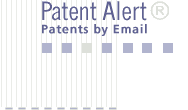The information available to a driver of a vehicle is greatly expanded
using wireless communications (e.g., using Bluetooth wireless
communication devices). In one embodiment, information regarding an
adjacent vehicle such as a brake light, a turn light, speed, distance,
direction, etc., is transmitted from one vehicle to a nearby or adjacent
other vehicle. The received information is used in any appropriate
manner, such as causing the receiving vehicle to change vehicle speed or
brake, to turn to avoid a collision, etc. In a second embodiment,
roadside wireless transceivers collect information regarding passing
vehicles, and central database is compiled relating to a traffic
conditions. The traffic condition information can be passed back to the
passing vehicles for appropriate use, e.g., causing the driver to slow
down, or even causing a navigation device in the receiving vehicle to
manually prompt for or automatically recalculate a best route to an
intended destination. In yet another embodiment, broadcast transmitters
can be established at signs and other significant locations transmitting
information to passing vehicles. The broadcast information may be as
simple as indicating the existence of the sign, or depending upon the
range of the particular wireless transmitter, the existence of a
particular sign, bump in road, curve, etc., can be forewarned far in
advance of when the driver will actually see the relevant object.
Alternatively, the broadcast information may be quite detailed, e.g.,
containing a detailed itemization and directions to a large number of gas
stations, restaurants, etc., reachable from a particular exit from a
highway.



